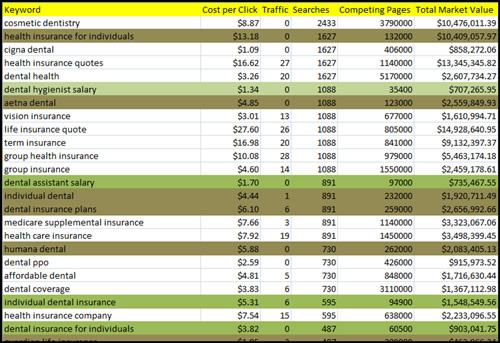 The importance of evaluating the effects of SEO over time using analytics is imperative for your optimization efforts.
The importance of evaluating the effects of SEO over time using analytics is imperative for your optimization efforts.

For example, it is a well known fact that the modifier “How To” is a great hook. Both for the reader and for search engines. This was inspired by a post I wrote approximately 9 months ago entitled “How to Optimize New Web Pages”, shortly thereafter it hit the #1 spot and remained to this day.
That’s great, if that were the case “all of the time”, but in reality, you have to go back and reassess each of your contributing keywords to ensure that they are properly nourished and don’t just drop out of sight.
It is important to establish a time-line for how long your keywords stay buoyant before they need to be reinvigorated so they remain upwardly mobile.
It is no secret that eye-tracking studies conclude that positioning above the fold has higher conversion rates. So, employing a touch of link insurance is not a bad idea.
Three things to consider freshening up:
- The Root Modifiers, they are the reason broad match keywords yield relevant results
- The Money Phrases, (Quote, FREE, Services, Company, Consultation, etc.)
- Monitoring the affects of adding new content and links over time
Every time you add a page of content, you are affecting and increasing the overall mathematical word count of your site. If the content is not structured with intent, you can unintentionally dilute the theme of your site by impacting site-wide keyword and word density counts. Building enough links is also a crucial component to this equation.
I am not implying to stop adding content, on the contrary use this information to keep a higher threshold for the keywords that are important. This the the time to see how your pages are fairing, so you can shore up dwindling rankings.
Use those same phrases and ensure each of your main ranking pages are not starved for links. I am not proposing methods, just bringing awareness to the phenomenon of link insurance (just because links were there a year ago, does not mean that they are still passing juice). You have to make sure the page is indexed and crawled to determine what it provides, otherwise just build fresh links.
Ranking for competitive phrases requires a different strategy than ranking for broad-match or long tail phrases. Naturally, having a balance of each is nice, since link and keyword diversification are a form of insulation.
The point is, the more content, the more links you will need to steer the off page factors in the right direction. At least, the right kind of links. Most pages rely on the strength of the domain and the internal links it provides to the page. Many pages have less than 25 backlinks externally referencing a site, yet they rank consecutively in the top 10 for a multiple keywords (often inadvertently as a result of link weight).
The concept of balancing the content to type of links should be elementary to most, but it wasn’t until I was using a few SEO tools and was seeing key phrases being diluted as a result of writing on a daily basis. To most, this would not be a concern, however, once again we need to know when to cap certain effects so that we can proportionately refine our focus to maintain certain rankings.
It is through on page adjustments to site structure, internal links or content that you have the ability to augment long-term rankings. By selecting a range of themed semantically related keywords (from analytics / keyword research). You could asses the keyword longevity (how long it ranked well) and link insurance (freshening up older links) saturate a niche (over time) by using those keywords tactfully throughout future content.
Each page of well written content that deep links to other pages can add life to those pages and set them on their own ranking spree as a result. As your entire site gains momentum (like a juggernaut imbued with authority) each new phrase is yet another notch on your measuring stick in your repetior of keywords that convert.
So, the value of going back to sift through the data of the past and formulate a solid strategy for the future growth is a great method to assess your relevance score (for those keywords in your site).








great SEO strategies. Thanks for sharing them.